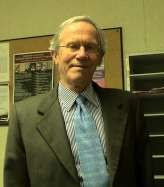Last Wednesday I attended the annual general meeting of my local community association. Guest speakers included our local MP David McGuinty who actually had to be cut off by the MC because his speech was too long (Why can’t elected representatives give apolitical speeches?). Our local councillor, Peter Hume, also attended to present well deserved community volunteer awards on behalf of the association.
Due to another local community association event, Hume could not stay for the main event, a talk by Professor Christopher Stoney from Carleton University on how community associations influence local decisions. This is unfortunate because he could have learned a thing or two about the effectiveness of bottom-up, grass roots democracy.
Because of the excessive amount of time occupied by McGuinty’s speech, Chris Stoney had to cut back on the scope of his talk, but he still managed to do a very effective job. His abridged talk raised a lot of questions from the audience. In addition to outlining his research into community governance, municipal government and citizen engagement he also addressed the topics of infrastructure projects and multi-level governance.
He spoke on some local government initiatives including Light Rail (LRT), Lansdowne Live and Hintonburg neighborhood renewal. He also addressed the effectiveness that Neighborhood Planning Initiatives (NPI) can have on the outcomes of city projects that effectively engage local communities. NPI is “….a new integrated planning process that will better utilize city resources and provide value-added services to the citizens of Ottawa through their involvement in the planning process.” (Internal EMC briefing document, March 2006)
Chris spent some time examining the degrees of engagement between governments and citizens. He provided some examples including work done in other countries. Here is an example from the Queensland Government in Australia:
· Information: a one-way relationship through which government delivers information to citizens.
· Consultation: a two-way relationship through which citizens provide feedback on issues defined by the government.
· Active participation: a collaboration through which citizens actively shape policy options, but where government retains the responsibility for final decisions.
Looking at these three levels of participation from a City of Ottawa perspective, in my view most issues are addressed by local government at the information-only level. Attempts to solicit and listen constructively to the views of citizens are token at best. However, recent issues in the city, notably Lansdowne Live, have energized the citizenry of Ottawa and the city has been forced to respond. How seriously the city’s response will reflect concerns raised by citizens remains to be seen. Other issues, like LRT, might eventually capture citizens in a more united way than they have in the past.
One of the roles of community associations is to provide an instrument through which citizens can unite to raise issues and concerns with their ward councillors and the city. Unfortunately, it does not always work this way. I have witnessed situations in which councillors try to use community associations as a platform for their own initiatives. This is entirely counter to the intended process. In some cases associations or individual members are actually chastised by their councillor for raising contrary views and ideas and they are punished in a number of way, one being withdrawal of support from community newspapers and other local initiatives.
For more information on Professor Stoney’s work on NPI initiatives visit http://www.cure-crfmu.org/
Subscribe to:
Post Comments (Atom)

No comments:
Post a Comment